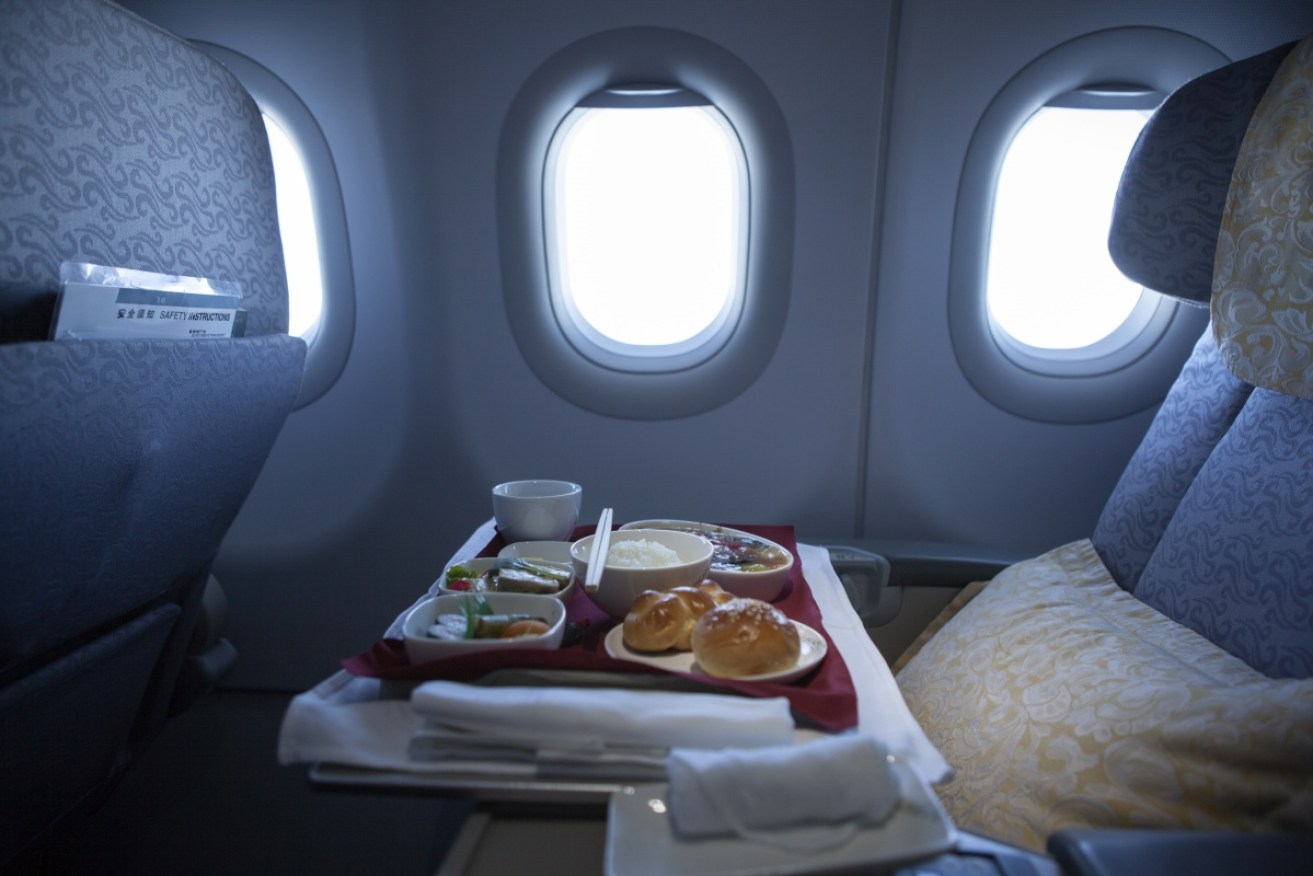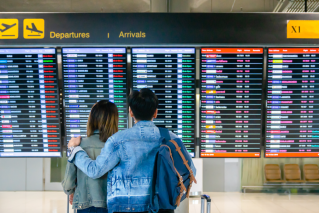The meal-high club: Why airline food tastes so bad


It seems impossible to enjoy a good meal when you're on a flight. Photo: Getty
Tasteless and shrouded in mystery, airline meals are the butt of jokes and the element of travel we all love to hate.
But what are the facts behind the most maligned food on the planet?
What’s with the bland taste?
Blame it on altitude. Dining at 30,000 to 40,000 feet (the average cruise altitude of commercial planes), impairs our taste and smell receptors. Reduced air pressure and humidity within the cabin is responsible for the effect.
Salt is perceived 20 to 30 percent less intense and sugar 15 to 20 percent less intense, according to 2010 research conducted in the flight lab of the Fraunhofer Institute for Building Physics.
“Food and beverages are perceived as if they were sniffed,” explains Fraunhofer Institute aroma-chemist, Dr. Andrea Burdack-Freitag.
Cornell University researchers also found airplane noise affects our palate, making us crave unami, a fifth taste described as savoury by the Japanese, and attributed to glutamate, an amino acid rich in tomatoes and other foods.
It’s why so many reach for the tomato juice inflight.
How fresh is it?
Your hot meal has a maximum shelf life of 72 hours (from cooking to departure time) thanks to world food safety guidelines set by the International Flight Services Association.
Cold food, like a fruit salad, must be consumed within around 48 hours of preparation or thawing.
There’s little fear of food poisoning. Strict industry standards govern preparation, storage, transportation and service.
In reality, hot food is only partially cooked and not long before takeoff, then chill-blasted, with the final phase happening onboard.
Where does airline food come from?
Most of the 55 million airline meals made globally each year are mass-produced by three companies (LSG Skychefs, Gate Gourmet and DHL).
That’s a revelation from a 2015 industry report by food safety specialist, Erica Sheward.
Our biggest beef with airline food
Australians biggest gripes are piddly-sized serves and tasteless vegetarian and vegan options, a 2016 Choice study suggested.
Forty per cent of passengers on a domestic or overseas flight complained they were still hungry after their meal.
Thirty-eight per cent of passengers choosing a vegetarian or vegan meal, rated it “Yuck” or “Super Yuck.” Those left unimpressed felt airlines were confused about the difference between vegetarian and vegan.
Children’s meals were another major cause of dissatisfaction, considered inappropriate for age and lacking in options.

A business class meal on board Air China. Photo: Getty
The best airline food
Nik Loukas, Melbourne-born reviewer of airline food and founder of InflightFeed, has flown 503,000 miles and consumed 284 in-flight meals in the process.
He rates the food aboard Singapore Airlines, Turkish Airlines and Austrian Airlines among the best in the world, describing the meals on Turkish Airlines as fresh, while Singapore Airlines gets an extra nod for service.
“Austrian Airlines offer a great meal upgrade option for economy passengers for 15 euros,” he says.
He’s also glowing about the business class meals on Air Europa: “It’s like eating from a farmers market, so fresh, and unique,” while SAS business class “is like dining in a cool Scandinavian restaurant”.
… And the worst
According to Mr Loukas’ blog, those needing to lift their game include Ukraine International Airlines, Air India and Sri Lankan Airlines.
Nonetheless, he appreciates the difficulties in delivering food in the sky and is currently filming a documentary exploring the behind the scenes of how the industry meets this challenge.
“They have to think about so many different issues in order to serve us a meal inflight.”








